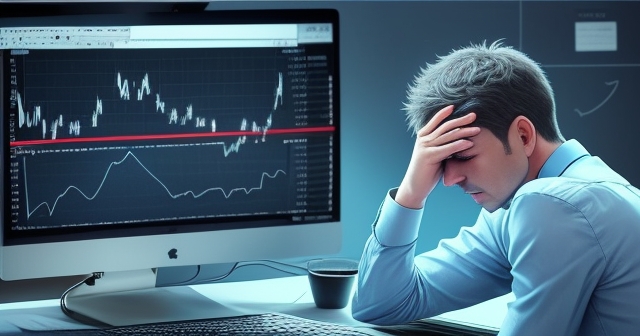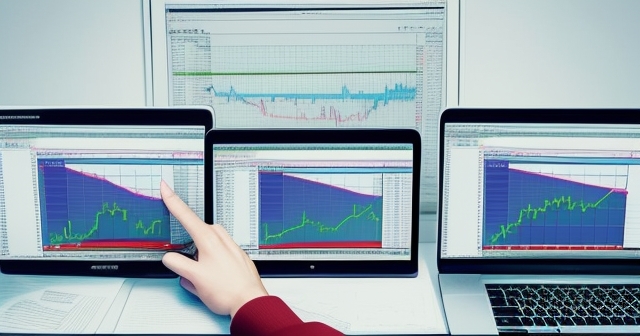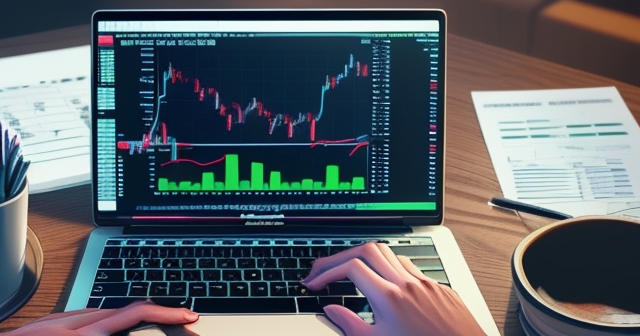
Why Forex Traders Lose Money: 10 Key Reasons for Failure
Table of Contents
ToggleThe Forex Paradox: Immense Opportunity, Profound Challenge
The Forex market, the largest financial market globally with a staggering daily trading volume exceeding $7.5 trillion, presents an alluring landscape for prospective traders. Its accessibility, 24/5 operation, and the potential for significant returns, often amplified by leverage, draw in millions of participants worldwide. Yet, despite this immense opportunity, empirical evidence and market data consistently highlight a stark reality: a vast majority of retail Forex traders ultimately fail to achieve consistent profitability, frequently incurring substantial losses. This high attrition rate is not random; it stems from a confluence of common, often avoidable, pitfalls. As we embark on this journey together, let us dissect the fundamental reasons behind this widespread failure, transforming this knowledge into a foundation for your potential success. Understanding these challenges is the critical first step towards building a resilient and profitable trading career.

Understanding the Forex market involves recognizing key factors that affect trading. Here are important points to consider:
- The Forex market operates 24 hours a day, five days a week, allowing traders to engage nearly anytime.
- Leverage can amplify both gains and losses, making risk management essential.
- The retail Forex sector has a high failure rate due to emotional decision-making and inadequate planning.
Trading Blind: The Absence of a Robust Trading Plan
Imagine piloting an aircraft without a flight plan, navigating solely by instinct and reacting to turbulence as it arises. The outcome is likely catastrophic. Similarly, attempting to trade the Forex market without a well-defined, documented trading plan is a primary catalyst for failure. A trading plan is more than just a vague idea of buying or selling; it is a comprehensive blueprint that governs every aspect of your trading activity. It should explicitly outline your trading strategy, including the specific conditions under which you will enter or exit a trade, the currency pairs you will focus on, and the timeframes you will analyze. Furthermore, it must incorporate rigorous risk and money management rules – elements so crucial they warrant deeper exploration shortly. Crucially, a plan provides objectivity, acting as a logical counterpoint to the emotional surges that can overwhelm decision-making during live trading.
Without a plan, your trading becomes reactive and inconsistent. You might chase perceived opportunities based on fleeting news headlines or gut feelings, deviate from sound principles, and fail to learn from mistakes because there is no baseline against which to measure performance. A robust plan includes criteria for evaluating its effectiveness and rules for when and how to adjust it. Consider this: have you taken the time to articulate your trading goals, your risk tolerance, and the specific methodologies you will employ? If not, you are trading blind, making success a matter of improbable luck rather than calculated execution. We must approach trading as a serious endeavor, requiring the same level of preparation and structure as any other complex business or professional undertaking.

The Discipline Deficit: How Emotions Sabotage Strategy
Even with a meticulously crafted trading plan, its efficacy is entirely dependent on your ability to adhere to it. This is where trading discipline enters the picture – and where many traders falter. The Forex market is a volatile environment designed to elicit powerful human emotions: the euphoria of a winning trade, the panic of a losing one, the fear of missing out (FOMO) on a potential move, and the stubborn refusal to accept a loss. These emotions, if unchecked, can override even the most logical trading strategy, leading to impulsive, irrational decisions.
Fear might cause you to exit a profitable trade prematurely, limiting your gains, or conversely, paralyze you from entering a valid trade setup. Greed can manifest as overleveraging, taking on excessive risk in pursuit of larger profits, or holding onto winning trades for too long, only to see profits vanish or turn into losses. Impatience leads to overtrading, forcing trades when conditions aren’t optimal, simply because you feel the need to be “in the market.” These emotional biases are powerful cognitive forces that work against rational, planned execution. Developing discipline is an ongoing process, requiring self-awareness, emotional regulation techniques, and unwavering commitment to your trading rules, regardless of the immediate outcome of any single trade. It’s the difference between acting like a calculated machine executing a program and a gambler swayed by hope and fear.
The Unforgiving Math: Mastering Risk and Money Management
Perhaps the single most cited reason for the high failure rate in Forex is inadequate risk and money management. While trading strategy dictates *when* to enter or exit a trade, risk and money management dictate *how much* capital you put at risk on any given trade and *how* you protect your existing capital. Failing here makes even a winning strategy unsustainable. The core principle is capital preservation. You must survive drawdowns to participate in future opportunities.
Key components of sound risk management include:
- Stop-Loss Orders: This is non-negotiable. A stop-loss order is an instruction to close a trade automatically if the price moves against you to a predetermined level. It caps your potential loss on any single trade. Failing to use stop-losses, or worse, moving them further away as a trade goes against you, is akin to driving without brakes.
- Position Sizing: This determines the number of currency units (or lots) you trade. Proper position sizing ensures that the potential loss, should your stop-loss be hit, represents only a small, predefined percentage of your total trading capital (e.g., 1% or 2%). Risky position sizing, like risking 10% or more of your capital on one trade, means a few losing trades can wipe out your account.
- Risk/Reward Ratio: Before entering a trade, you should calculate the potential profit (reward) relative to the potential loss (risk). A favorable risk/reward ratio (e.g., 1:2 or 1:3) means you stand to gain more than you stand to lose. Consistently taking trades with poor risk/reward ratios requires an exceptionally high win rate to be profitable, which is difficult to sustain.

Money management extends beyond individual trades to the overall health of your trading account. It involves setting limits on total exposure, understanding the impact of drawdowns on required recovery gains (a 20% loss requires a 25% gain to break even; a 50% loss requires a 100% gain), and ensuring you are adequately capitalized for your chosen trading style and leverage. Many traders are undercapitalized from the start, making proper risk management (like limiting risk to 1-2% per trade) impossible with meaningful position sizes, or forcing them into excessively risky behavior just to see significant returns. Without robust risk and money management rules, even a good trading strategy is a car without wheels – it cannot take you far before crashing.
If you are exploring platform options that facilitate robust risk management tools like mandatory stop-losses and flexible position sizing, Moneta Markets is worth considering. It is an Australian-based platform offering a wide range of instruments and features designed to support both beginner and experienced traders in implementing their risk protocols effectively.
The Double-Edged Sword of Leverage: Amplifying Gains and Losses
High financial leverage is a defining characteristic of the Forex market, making it accessible to traders with relatively small amounts of capital. Brokers often offer leverage ratios of 100:1, 200:1, or even higher (e.g., 400:1). Leverage allows you to control a large notional value of currency with a small amount of margin capital. For example, with 100:1 leverage, $1,000 of your capital can control $100,000 worth of currency.
The appeal is obvious: leverage magnifies potential profits. A small movement in your favor, when applied to a large position size facilitated by leverage, can yield substantial returns relative to your initial capital. However, leverage is a double-edged sword that equally, and often more rapidly, magnifies losses. A small movement against your leveraged position can quickly erode your margin capital. If the market moves against you sufficiently, your broker may issue a “margin call,” demanding additional funds to maintain the required margin level. If you cannot meet the margin call, the broker will automatically close your positions, typically resulting in a significant or even total loss of your account capital.

High leverage, combined with poor risk management and undercapitalization, is a potent recipe for rapid account depletion. Traders are often drawn to the promise of amplified gains without fully appreciating the commensurate increase in risk. Understanding leverage is not just about the potential upside; it’s fundamentally about understanding your exposure and the speed at which adverse market movements can impact your account equity. It requires disciplined position sizing relative to your *actual* capital, not just the amount of margin required to open a trade.
The Psychological Minefield: Expectations, Biases, and Addiction
Trading is as much a psychological game as it is a technical or fundamental analysis exercise. Beyond the basic emotions of fear and greed, a range of psychological factors contribute significantly to trader failure. Unrealistic expectations are high on this list. Many newcomers view Forex as a “get-rich-quick” scheme, lured by promises of easy money and extravagant returns. This mindset is incredibly dangerous; it fosters impatience, encourages excessive risk-taking, and leads traders to abandon sound principles at the first sign of difficulty.
Other common psychological biases include:
- Confirmation Bias: Seeking out and interpreting information that confirms your existing trading bias, while ignoring contradictory evidence.
- Overconfidence: After a string of winning trades, traders may become overconfident, taking on larger risks or abandoning their plan, leading to subsequent losses.
- Loss Aversion: The tendency to feel the pain of a loss more strongly than the pleasure of an equivalent gain. This can lead to holding onto losing trades too long (hoping they will turn around) or cutting profitable trades too short (fearful of losing accumulated profits).
- Recency Bias: Giving too much weight to recent events or performance, leading to chasing trends or abandoning strategies based on short-term outcomes.

Furthermore, trading can become addictive. The thrill of potential profits and the constant stimulation of market fluctuations can lead to compulsive trading behavior (overtrading), even when the trader knows logically that they are making poor decisions. Trading addiction can be financially and psychologically devastating. Recognizing and managing these psychological hurdles is vital. It requires self-awareness, emotional intelligence, and perhaps seeking external support or implementing strict pre-trade routines to ensure you are in the right mindset before risking capital.
Navigating the OTC Landscape: Understanding Counterparty Risk
Unlike stock or futures markets traded on centralized exchanges, the retail Forex market primarily operates Over-the-Counter (OTC). This means you are typically trading directly with the broker (often referred to as the dealer) as your counterparty, rather than trading directly with other market participants through a central clearing house. While many reputable brokers operate within this structure, it introduces a layer of counterparty risk that is different from exchange-based trading.
In the OTC model, the broker controls the trading platform and often sets the prices and execution speeds you receive. While regulated brokers are required to provide fair pricing and execution, there is an inherent conflict of interest: your trading losses are often the broker’s trading gains (from their perspective as your counterparty). This structure, particularly with unregulated or unscrupulous dealers, can potentially lead to issues like price manipulation (widening spreads during volatile times or triggering stop-losses), slow execution, or difficulty withdrawing funds, especially if you are profitable.
Moreover, in an OTC setup, the funds you deposit may not be held in segregated accounts protected from the broker’s own financial difficulties. If an unregulated or poorly capitalized dealer faces insolvency or disappears, your deposited capital could be lost. Understanding the nature of the OTC market and the specific counterparty risk associated with your chosen broker is therefore paramount.
Beyond the Market: Identifying and Avoiding Forex Fraud
The allure of quick profits in Forex unfortunately attracts not only legitimate traders but also sophisticated fraudsters. Fraud is a significant factor contributing to trading losses, particularly for newcomers. Scams can take various forms, including:
- Ponzi Schemes Masquerading as Trading Funds: Promising unrealistically high, consistent returns from Forex trading, but simply paying early investors with money from new investors.
- Bogus Trading Systems/Robots: Selling automated trading software (EAs) or signals that claim guaranteed profits but are either worthless or designed to fail.
- Manipulative Unregistered Dealers: As mentioned in the OTC section, these are brokers, often operating offshore without proper regulation, who may tamper with trading platforms, manipulate prices, or simply refuse withdrawal requests, demanding extra payments or fees before disappearing with your funds.
- Social Media Scams: Fraudsters heavily use platforms like Facebook, Instagram, and Telegram to promote fake trading opportunities, solicit investments, or direct victims to their unregulated, fraudulent brokerage websites.
A critical red flag for potential fraud is unsolicited contact (especially via social media), promises of guaranteed or excessively high returns with little risk, pressure to deposit funds quickly, and claims of secret trading strategies. Regulatory bodies like the CFTC (Commodity Futures Trading Commission) in the U.S. and others globally issue frequent warnings about Forex fraud, particularly concerning off-exchange trading and unregistered entities. Always verify a broker’s regulatory status with the appropriate authorities before depositing any funds. Remember, if it sounds too good to be true, it almost certainly is.
If you are seeking a Forex broker with a strong emphasis on regulatory compliance and client fund security, Moneta Markets holds multiple licenses from reputable global regulators like FSCA, ASIC, and FSA. They also offer features like segregated client funds and 24/7 support, which can provide an added layer of confidence against the risks associated with less scrupulous market participants.
The Constant Evolution: Adapting to Dynamic Market Conditions
The Forex market is not static. It is influenced by a complex interplay of global economic data, central bank policies, geopolitical events, and shifts in market sentiment. A trading strategy that performed well in one market environment (e.g., a trending market) may fail spectacularly in another (e.g., a range-bound or choppy market). Many traders fail because they cling rigidly to a single strategy, refusing to acknowledge that its edge may have diminished or disappeared as market conditions change.
Successful traders understand that continuous learning and adaptation are essential. This involves constantly monitoring market dynamics, evaluating the performance of their strategy under current conditions, and being willing to adjust their approach or even step aside when their strategy is not suited to the prevailing environment. Learning through trial and error in a live, leveraged Forex account is the most expensive and dangerous way to acquire this understanding. It’s far better to backtest strategies across different market regimes and test adjustments in a simulated (demo) environment before risking real capital. The Forex market is a dynamic beast; we must be equally dynamic in our approach to trading it.
Undercapitalization: The Silent Killer of Trading Accounts
Entering the Forex market with insufficient capital is a common and often fatal mistake. While micro-accounts allow trading with very small sums, attempting to grow a tiny account through high-risk trading is incredibly difficult and unsustainable. Undercapitalization forces traders into several losing scenarios:
- Inability to Manage Risk Properly: To achieve meaningful profit potential from a small account, traders often feel compelled to risk a disproportionately large percentage of their capital on each trade. This violates fundamental risk management principles and makes the account highly vulnerable to a short string of losses.
- Psychological Pressure: Trading with limited capital, especially if it’s money you cannot afford to lose, creates immense psychological pressure. Every small drawdown feels significant, leading to stress, emotional decision-making, and a higher likelihood of deviating from the trading plan.
- Inability to Withstand Drawdowns: All trading strategies experience losing periods (drawdowns). An undercapitalized account has very little buffer to absorb these inevitable swings in equity. A relatively small percentage drawdown in dollar terms can represent a massive percentage of a tiny account, requiring an even larger percentage gain just to recover.

Starting with adequate capital allows you to employ proper position sizing (risking only 1-2% per trade) while still trading meaningful contract sizes. It provides the necessary buffer to weather losing streaks and reduces the psychological pressure, allowing for more disciplined execution. While “adequate” is relative to your goals and lifestyle, attempting to turn a few hundred dollars into a fortune overnight is an unrealistic expectation driven by undercapitalization.
Building Resilience: A Path Towards Sustainable Forex Trading
The journey through the Forex market is challenging, but the high failure rate does not mean success is impossible. It means success requires diligent preparation, unwavering discipline, continuous learning, and a realistic perspective. We have explored the primary reasons traders lose money – the absence of a plan, lack of discipline, poor risk management, misuse of leverage, psychological pitfalls, counterparty risks in the OTC market, the prevalence of fraud, and failure to adapt or adequately capitalize their efforts.
Building a sustainable Forex trading career is about consciously addressing each of these points. It starts with education – truly understanding the market, the risks, and proven trading methodologies. It demands the creation and rigorous adherence to a detailed trading plan. It requires mastering risk and money management principles, treating capital preservation as your highest priority. It necessitates developing emotional intelligence and discipline to execute your plan objectively. It involves choosing a reputable, regulated broker and understanding the nuances of the market structure you are trading within. And it is an ongoing process of learning, adapting, and refining your approach.
There are tools and partners available to support you on this path. For example, when considering the practical tools you’ll need to implement your strategy and manage risk, Moneta Markets provides access to platforms like MT4, MT5, and their proprietary Pro Trader, which are equipped with essential features for charting, analysis, order execution, and risk control. Their commitment to providing regulated access and educational resources can be valuable assets as you build your trading resilience.
Forex trading is not a shortcut to wealth. It is a skill that requires dedication, practice, and resilience. By understanding and actively mitigating the common pitfalls discussed, you significantly increase your probability of navigating this complex market successfully. Focus on the process, manage your risk, and cultivate the discipline necessary to execute your plan. The path to profitability is built on a foundation of knowledge, preparation, and disciplined action.
| Key Components of Risk Management | Importance |
|---|---|
| Stop-Loss Orders | Limit losses; essential for capital preservation. |
| Position Sizing | Controls risk per trade; ensures sustainability. |
| Risk/Reward Ratio | Helps to determine potential profitability versus losses. |
why forex traders lose moneyFAQ
Q:What are the primary reasons traders fail in Forex?
A:The most common reasons include lack of a trading plan, poor risk management, emotional decision-making, and unrealistic expectations.
Q:How can I manage risk effectively in trading?
A:Utilize stop-loss orders, appropriate position sizing, and calculate your risk/reward ratio prior to trades.
Q:Is leverage beneficial for Forex traders?
A:Leverage can magnify both gains and losses; effective risk management is essential when using it.
You may also like
Calendar
| 一 | 二 | 三 | 四 | 五 | 六 | 日 |
|---|---|---|---|---|---|---|
| 1 | 2 | 3 | 4 | 5 | 6 | 7 |
| 8 | 9 | 10 | 11 | 12 | 13 | 14 |
| 15 | 16 | 17 | 18 | 19 | 20 | 21 |
| 22 | 23 | 24 | 25 | 26 | 27 | 28 |
| 29 | 30 | 31 | ||||
發佈留言
很抱歉,必須登入網站才能發佈留言。